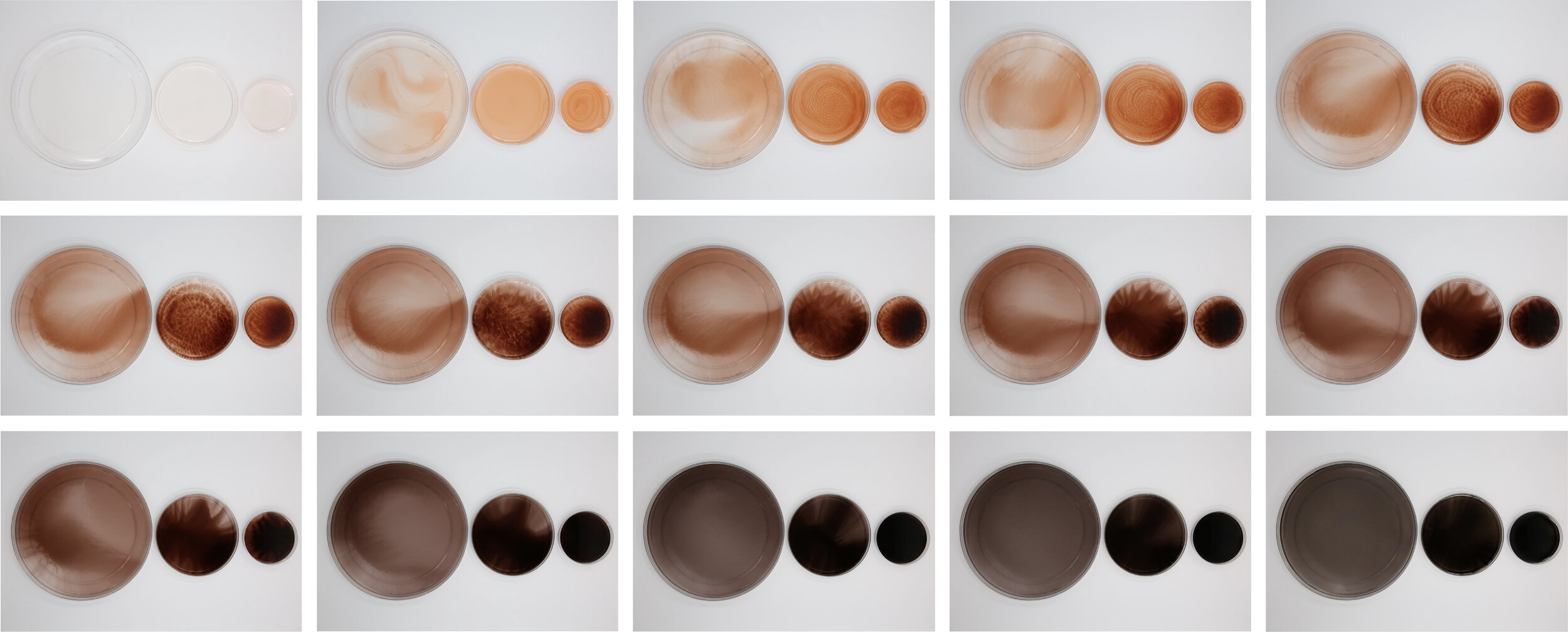

















Melanins make up a pigment group found across many kingdoms of life. They are found in cuttlefish ink, fungal cell walls, and bacteria, as well as in bird feathers, butterfly wings, and animal fur. Even within the human body, melanins are found in the skin, eyes, inner ear, brain, lips, and hair. This pigment group represents a unifying thread in the phenotypic diversity of life.
Credit: Sunanda Sharma
All images courtesy of The Mediated Matter Group

While they are most known for the striking coloration they provide - from yellow, to red, to black - melanins have many functionalities, many of which are still being explored.
Credit: Sunanda Sharma & Susan Williams

Evidence for some types of melanin dates back to the Jurassic period, over 160 million years ago. Today, it is found in organisms across very diverse ecosystems and even in different parts of the same organism.
Credit: Sunanda Sharma & Susan Williams

I am interested in understanding the different roles and signatures of melanins across species, and spatial and temporal dimensions. I have been studying how melanins can be extracted from natural sources - for instance, enzymatically or chemically extracted from bird feathers.
Credit: Sunanda Sharma

Mushroom tyrosinase, for example, catalyzes the oxidation and polymerization of the amino acid L-tyrosine. This process can be visually observed through color changes that result from intermediate pigment formation. In the experiment shown here, the four wells on the left have various amounts of tyrosinase, while the two on the right have copper sulfate added.
Credit: Sunanda Sharma

Additionally, movement is generated within the reaction vessel, due to factors such as buoyancy driven flow and fluid convection.
Credit: Sunanda Sharma & Christoph Bader

The rate of formation and type of pigment formed was greatly affected by the vessel dimensions, orientation, shape, and dynamic qualities.
Credit: Sunanda Sharma & Christoph Bader

A major technique used for this series of experiments was timelapse photography, which is able to capture patterns in color, movement, and spatial aggregation of polymers that are formed. In this experiment, each plate was modified according to two parameters - air exposure (lid on or off) and enzyme state (liquid or solid).
Credit: Sunanda Sharma

Over the course of just a few hours, the small amount of tyrosinase (polyphenol oxidase) catalyzed the oxidation and polymerization of the L-tyrosine amino acid into synthetic melanin.
Credit: Sunanda Sharma

In parallel, we utilized the Hybrid Living Materials method to spatiotemporally template the production of melanin by engineered bacterial strains (E. coli and B. subtilis).
Credit: Rachel Soo Hoo Smith, Christoph Bader, Dechuan Meng

We have been able to print these pigments as part of small objects, encapsulating this biopolymer in a structural component. This brings the natural biopolymer into a new realm of automated fabrication, as well as larger-scale and novel applications.
Credit: Sunanda Sharma & Christoph Bader

These pigments can be printed as liquid into intricate shapes and patterns. These are initial prototypes that were created in autumn 2018 using the Stratasys Objet30 Polyjet printer in a modified manner.
Credit: Sunanda Sharma & Christoph Bader

This fabrication process was applied to create a 50cm tall print which was featured in a piece entitled ‘Totems’, which debuted at the XXII Triennale di Milano: Broken Nature - Design Takes on Human Survival. The print contains six individual channels of variable width, each of which contains melanin from a different species. All feathers, inks, and mushrooms were purchased commercially from ethical sources.
Credit: Sunanda Sharma

In this way, six distinct colors - and absorption spectra - were represented in an architectural installation. This piece represents the unity in the diversity of life by focusing on a pigment group that is highly phylogenetically and evolutionarily preserved, but is strongly associated with only human physical identity.
Credit: Sunanda Sharma

The print itself was set within a 3 meter tall column, and situated at the entrance of the exhibition space. It was on display from March to September 2019.
Credit: Sunanda Sharma

This project was one of the most interesting and challenging that I have been a part of, due to the sensitive connotation of the pigment melanin. As part of my research, I began to read about the ethics of art and science, discussed the project with members of my community and beyond, and considered the various perspectives on the use of melanin as a material. There is a gap between the scientific and social understanding of this pigment group, which in turn led to this project being a transformative experience in my own work as a scientist and woman of color.
Credit: Sunanda Sharma